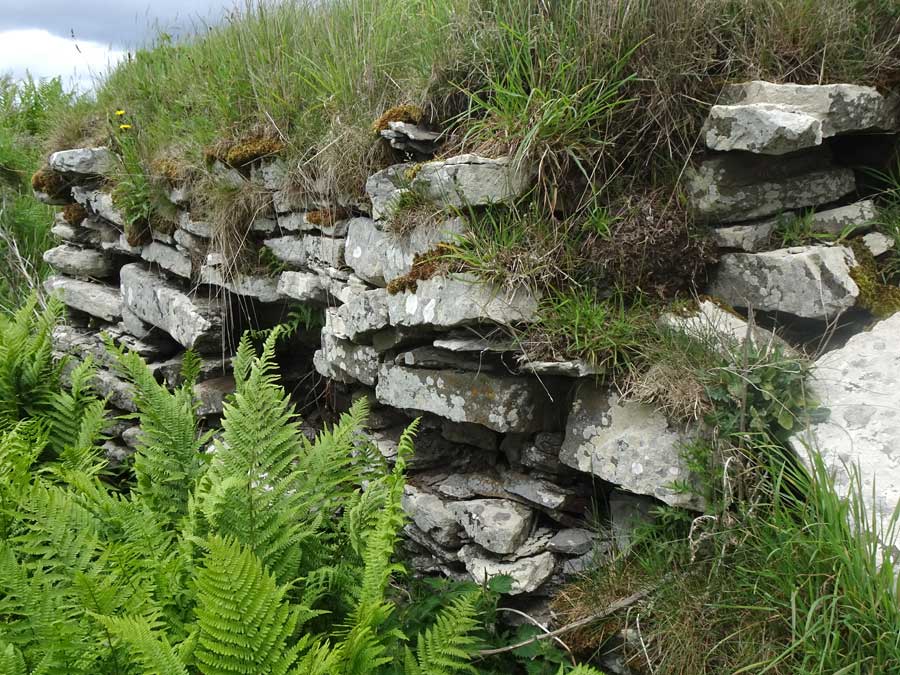
First view on approaching Kirk Tofts broch. The entrance passage is concealed by rampant fern growth both in front of it and along its length. The dip in the grassy ramparts indicates its location.

First view on approaching Kirk Tofts broch. The entrance passage is concealed by rampant fern growth both in front of it and along its length. The dip in the grassy ramparts indicates its location.

This is the entrance passage to Kirk Tofts broch, viewed from outside the structure, and choked by vegetation.

Viewed from within Kirk Tofts broch, this is the entrance passage, heavily choked with vegetation.

Internal walling courses on the southwest arc of Kirk Tofts broch, with the village of Keiss beyond.

This is a close-up photograph of the walling courses within the entrance passage at Kirk Tofts broch.

This is a panorama overlooking Kirk Tofts broch, looking towards the adjacent cemetery.

This is a stitched panorama taken from the rampart of Kirk Tofts broch, looking towards the village of Keiss.
Visited: June 18, 2019
The Caithness village of Keiss can boast three brochs in its vicinity: Keiss South (K), Whitegate (W) and Kirk Tofts (T).
Kirk Tofts broch is situated immediately behind Keiss cemetery, on the A99 immediately north of the village (marker ‘T’ on the map below). There is ample parking for the visitor in front of the graveyard.
My first impression of the area was of a field thick with ferns, nettles and rampant vegetation, and I could make little progress through it. Returning to my car, I recalled that my hillwalking gear was in the boot, and fitted out with sturdy boots and gaiters, and a walking pole for balance, I returned to the broch.
My initial view was hardly inspiring. After negotiating the field of nettles, I saw ahead a section of drystone walling which I initially took to be a mere remnant of a destroyed broch. But I pressed on, and on reaching this wall, realised that it was an exposed section of the outer wall of the broch, with a well defined entrance passage. Even though this wall must have been close to two metres tall, I did not realise that there was an entrance passage through it until I was right beside it as it was completely concealed by rank vegetation both in front of and within it!
Once through the entranceway, most of the interior is defined by walling many courses high, and generally close to two metres tall. Unfortunately, thick vegetation, mainly rampant ferns growing everywhere, undoubtedly conceals many of the finer points of construction. According to Canmore there is much to see at Kirk Tofts, including two intra mural stairways, but these were not evident to me. Doubtless a visit in early spring, before plant growth has commenced, would prove more rewarding.
When visiting the site, great care should be taken as the terrain is everywhere very uneven beneath the all-concealing vegetation. A walking pole is a valuable asset in maintaining balance.
For those interested, the Canmore website provides a wealth of information relating to the structure of Kirk Tofts broch, the finds discovered within it and the various phases of its occupation, describing it as: ‘one of the best examples of a 1st phase broch (1st centuries BC and AD), re-used during the Broch II phase (2nd, 3rd centuries AD) and again during the post-broch era‘.

























